What is a Star?
A star is a luminous sphere of plasma held together by its own gravity. It is a massive, glowing sphere of hot gases that produces energy through nuclear fusion reactions in its core.
Types of Stars
There are different types of stars based on their size, temperature, and color. The main types of stars include:
- Main Sequence Stars: These are the most common type of stars, including our sun. They fuse hydrogen atoms in their cores.
- Red Giants and Supergiants: These are large, cool stars nearing the end of their life cycle.
- White Dwarfs: These are small, hot stars that have exhausted their nuclear fuel.
- Neutron Stars and Black Holes: These are the remnants of massive stars after they have exploded in a supernova.
Life Cycle of a Star
A star goes through a life cycle that is determined by its mass. The basic stages of a star's life cycle include:
- Nebula: A star begins its life as a cloud of gas and dust called a nebula.
- Protostar: Gravity causes the nebula to condense and form a protostar.
- Main Sequence: The protostar becomes a main sequence star and fuses hydrogen in its core.
- Red Giant or Supergiant: As the star runs out of hydrogen, it expands and becomes a red giant or supergiant.
- Planetary Nebula or Supernova: Depending on its mass, a star will either shed its outer layers in a planetary nebula or undergo a supernova explosion.
- White Dwarf, Neutron Star, or Black Hole: The remnants of the star form a white dwarf, neutron star, or black hole.
Star Formation and Composition
Stars form from clouds of gas and dust in space called nebulae. The composition of a star is primarily hydrogen and helium, with trace amounts of other elements.
Observing Stars
Stars can be observed using telescopes and other astronomical instruments. Astronomers study stars' spectra, luminosity, temperature, and other characteristics to understand their properties and behavior.
Key Facts to Remember
- Stars are massive spheres of hot gases that produce energy through nuclear fusion.
- There are different types of stars, including main sequence, red giants, white dwarfs, neutron stars, and black holes.
- A star's life cycle includes stages such as nebula, protostar, main sequence, and eventual transformation into a white dwarf, neutron star, or black hole.
- Stars form from nebulae and are primarily composed of hydrogen and helium.
- Astronomers study stars' spectra, luminosity, and temperature to understand their properties.
[Star] Related Worksheets and Study Guides:
.◂Science Worksheets and Study Guides Fifth Grade. The 6-Kingdoms of life
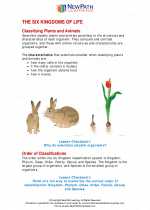
 Activity Lesson
Activity Lesson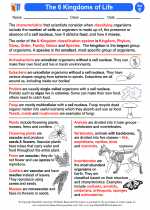
 Worksheet/Answer key
Worksheet/Answer key
 Worksheet/Answer key
Worksheet/Answer key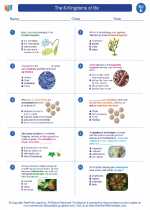
 Worksheet/Answer key
Worksheet/Answer key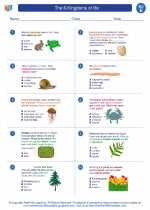
 Worksheet/Answer key
Worksheet/Answer key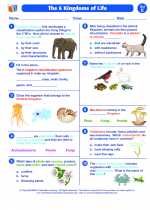
 Vocabulary/Answer key
Vocabulary/Answer key
 Vocabulary/Answer key
Vocabulary/Answer key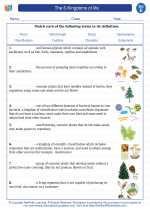
 Vocabulary/Answer key
Vocabulary/Answer key
 Vocabulary/Answer key
Vocabulary/Answer key
